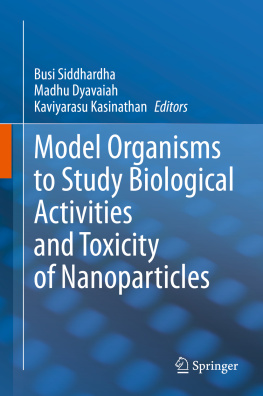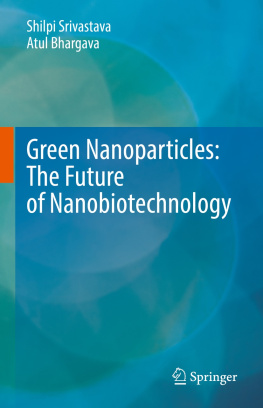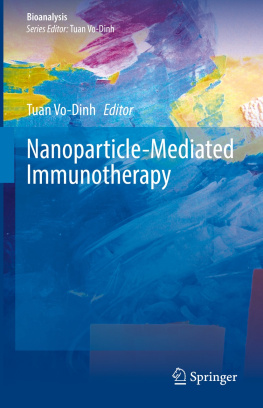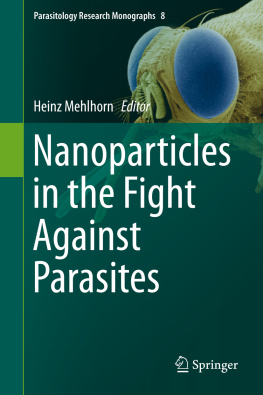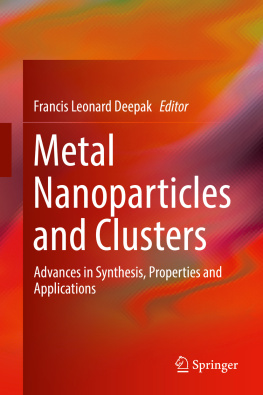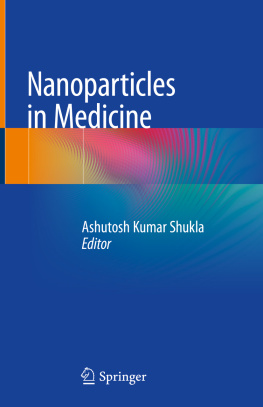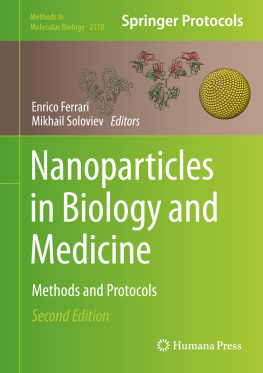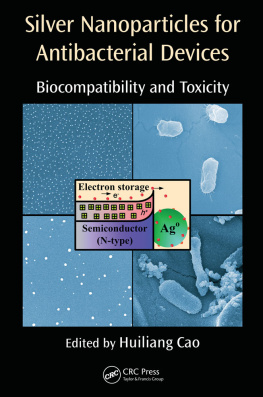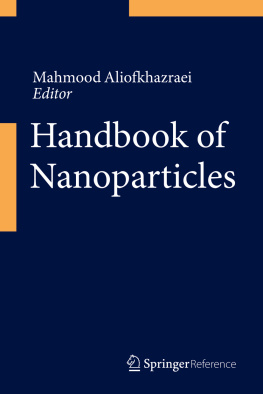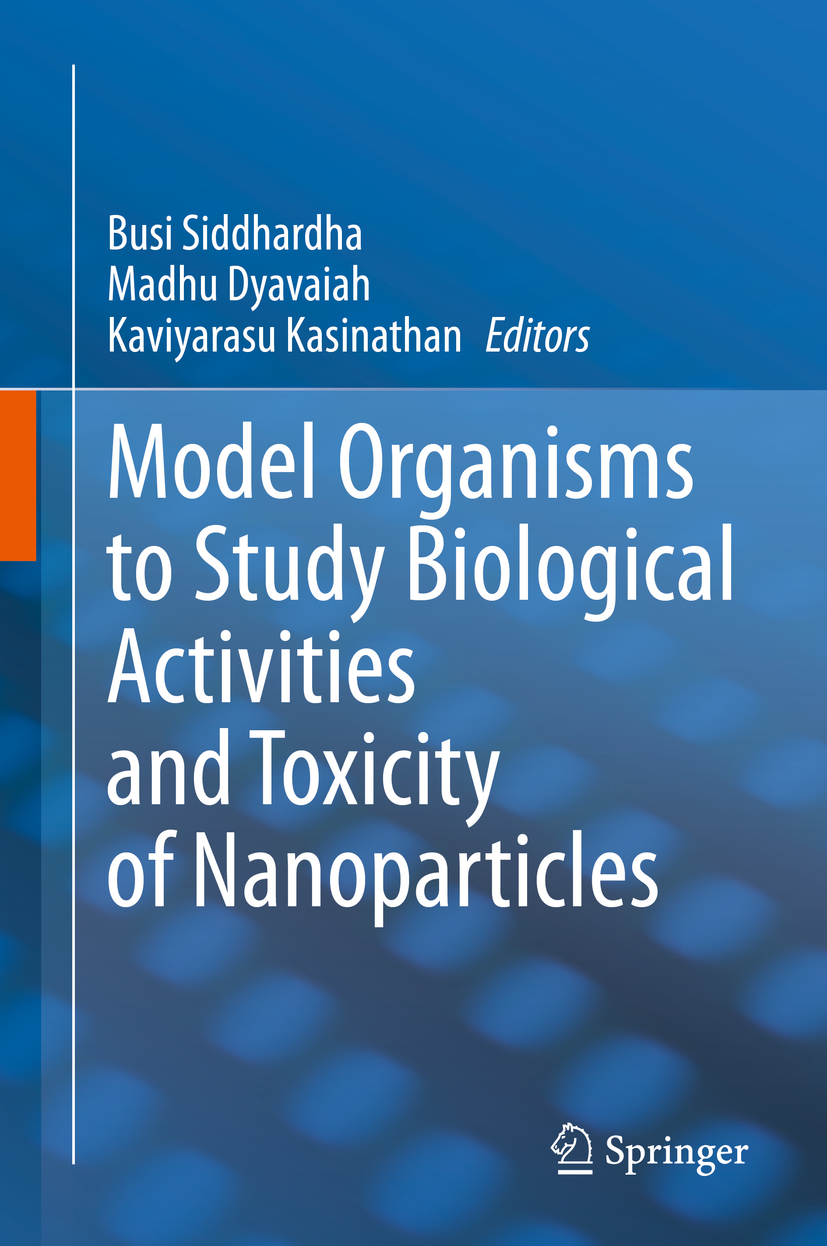Editors
Busi Siddhardha
Department of Microbiology, School of Life Sciences, Pondicherry University, Pondicherry, India
Madhu Dyavaiah
Department of Biochemistry and Molecular Biology, School of Life Sciences, Pondicherry University, Pondicherry, India
Kaviyarasu Kasinathan
Materials Research Group, iThemba LABS-National Research Fond., Cape Town, South Africa
ISBN 978-981-15-1701-3 e-ISBN 978-981-15-1702-0
https://doi.org/10.1007/978-981-15-1702-0
Springer Nature Singapore Pte Ltd. 2020
This work is subject to copyright. All rights are reserved by the Publisher, whether the whole or part of the material is concerned, specifically the rights of translation, reprinting, reuse of illustrations, recitation, broadcasting, reproduction on microfilms or in any other physical way, and transmission or information storage and retrieval, electronic adaptation, computer software, or by similar or dissimilar methodology now known or hereafter developed.
The use of general descriptive names, registered names, trademarks, service marks, etc. in this publication does not imply, even in the absence of a specific statement, that such names are exempt from the relevant protective laws and regulations and therefore free for general use.
The publisher, the authors, and the editors are safe to assume that the advice and information in this book are believed to be true and accurate at the date of publication. Neither the publisher nor the authors or the editors give a warranty, expressed or implied, with respect to the material contained herein or for any errors or omissions that may have been made. The publisher remains neutral with regard to jurisdictional claims in published maps and institutional affiliations.
This Springer imprint is published by the registered company Springer Nature Singapore Pte Ltd.
The registered company address is: 152 Beach Road, #21-01/04 Gateway East, Singapore 189721, Singapore
Preface
Past 70 years had witnessed how the way we live and work, transformed by some tiny inventions. The entry of nanotechnology into the world of science has revolutionized all its fields. Nanotechnology is known as an ever-evolving domain since ancient times and is being embraced into a wide variety of disciplines. Nanotechnology delivers an innovative picture of the destiny of biology and medicine. It was fascinating that nanomaterial can be tailored at extremely small scales to achieve their specific properties. Hence, it was possible to make the materials extremely stronger, more durable, more reactive, or lighter through extending the nanoscience toolkit. Nanoscience has the potential to modify every part of our lives. Nanoworld has a positive impact on all materials field such as polymers, metals, biomaterials, and ceramics. These new materials are believed to the foundation of major technological advances. So, the coming era will be enriched with enormous impact of nanotechnology. Future developments in the field of electronics, manufacturing, communications technology, information technology, biology, and medicine could change our earlier approaches. Our world also witnessed the nanotechnological revolution through the powerful combination of this new frontier area, nanoscience, and biotechnology. This nanotechnological revolution emerged in the nanobiotechnology field and positioned India among the world leaders owing to their creation of entirely new processes and industries. Research on nanoscience anticipated that it can deliver priceless set of tools and helpful devices in research in the forthcoming days. Scientists have initiated and received valuable outputs regarding the commercial applications in pharmaceutical industry along with new therapies, in vivo imaging and advanced drug delivery system.
However, nanotoxicology is a new research domain to study and evaluate the detrimental effects of nanomaterials on human health and to protect environment. Utmost importance should be given to depict the exposure risk of nanomaterials. Understanding the toxicity of nanoparticles is challenging and critical. Studies regarding nanotoxicology will reveal the new biological mechanisms which will give new life to nanoscience and nanotechnology. With the advent of nanoparticle applications in broad areas, mode of action of nanoparticles on health and ecosystem is unpredictable but can be scrutinized and evaluated. If possible, several regulatory guidelines can be instigated prior to their utilization. It has been suggested to nullify the toxic effects of nanoparticles prior to their use in different fields. Developments in the nanoworld have resulted in innumerable possibilities for implications in medicine. Still, research will continue long into the future concerning the potential effects to the human health and environment.
Here, we introduce a book that imparts knowledge on recent advances in the utilization of model organisms to understand the biological activities and toxicity of nanosized particles. As nanotechnology is evolved as a multi-trillion-dollar business sector which covers a wide range of industries with a rapid commercial transition of nanoscience from research to industrial level, model systems at cellular level and organism level are prerequisite to potentially evaluate their biological activities and toxic effects. Model systems, including prokaryotes, cell-based systems, and laboratory animals are important to evaluate the biological activities and toxicity of nanoparticles. This book familiarizes the reader to different possible and novel model organisms and their potential use to understand various biological activities such as antimicrobial, antibiofilm, anticancer, and antidiabetic of nanoparticles. This book also provides a diverse sequence of potential model organisms to evaluate and understand the toxicity of nanoparticles. Model systems and their utilization in nanotechnology can provide insights in the validation and utilization of nanoparticles in medicine with less toxic effects. The chapters also describe state-of-the-art applications of model organisms in research for better utilization of nanoparticles. Authors believe that the book will be of interest to biologists, materials scientists, toxicologists, pharmacologists, molecular biologists, and people working in the field of nanotechnology, nanomedicine, and nanobiotechnology.
Busi Siddhardha
Madhu Dyavaiah
Kaviyarasu Kasinathan
Pondicherry, India Pondicherry, India Cape Town, South Africa
Contents
Ammani Kandru
Karan Chaudhary and Dhanraj T. Masram
Indranil Chattopadhyay
Preeti C. Sangave , Nivedita M. Matkar and Vasanti Suvarna
L. C. Razanamahandry , A. K. H. Bashir , K. Kaviyarasu , Lukhanyo Mekuto , S. K. O. Ntwampe and M. Maaza
Kankan Sharma , Simranjeet Singh , Vijay Kumar , Satyender Singh , Shivika Datta , Daljeet Singh Dhanjal , Punmeet Kaur and Joginder Singh
Jasti Tejaswi , Kaligotla Venkata Subrahmanya Anirudh , Lalitha Rishika Majeti , Divya Kotagiri , Khasim Beebi Shaik and Kolluru Viswanatha Chaitanya

